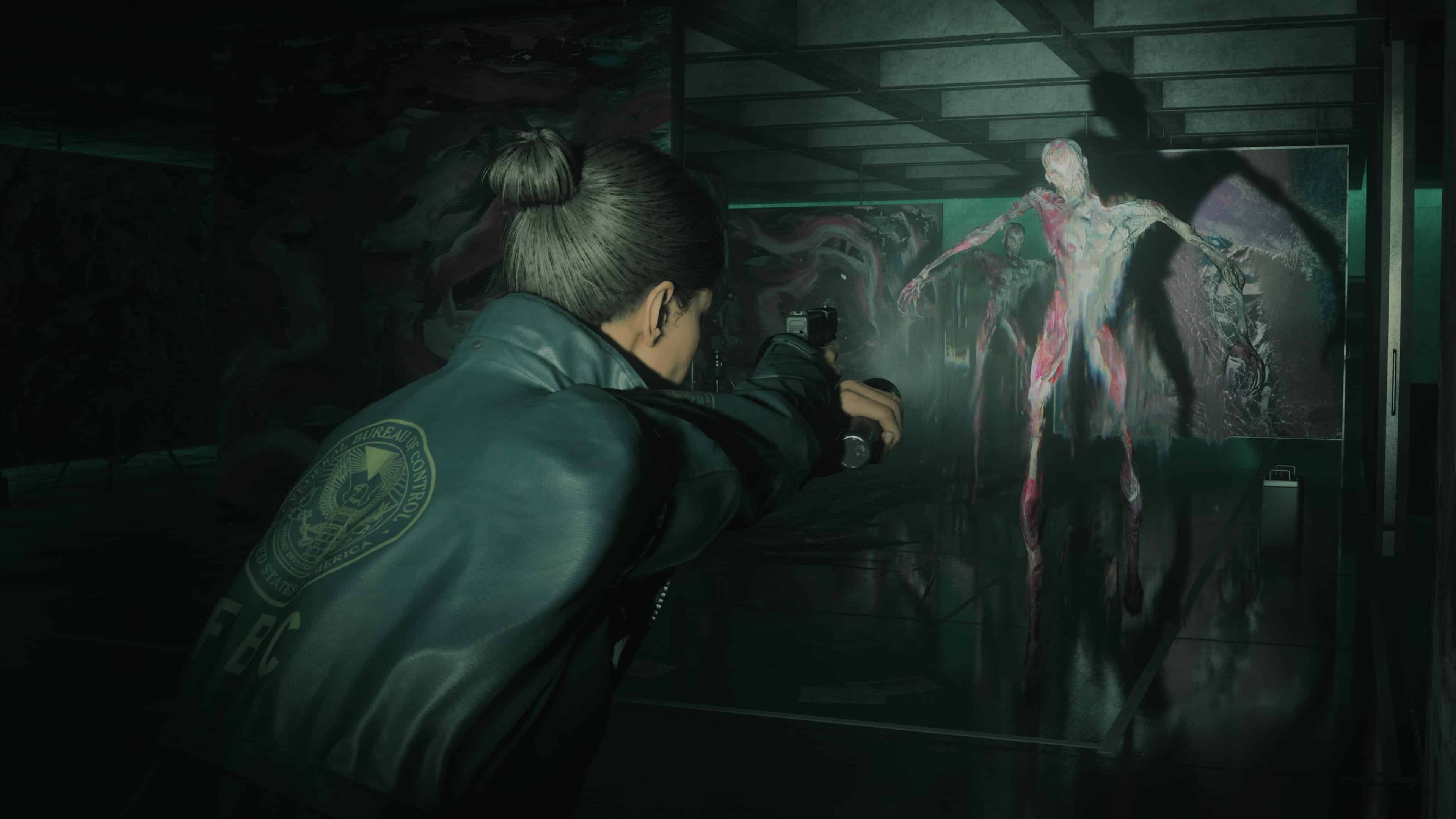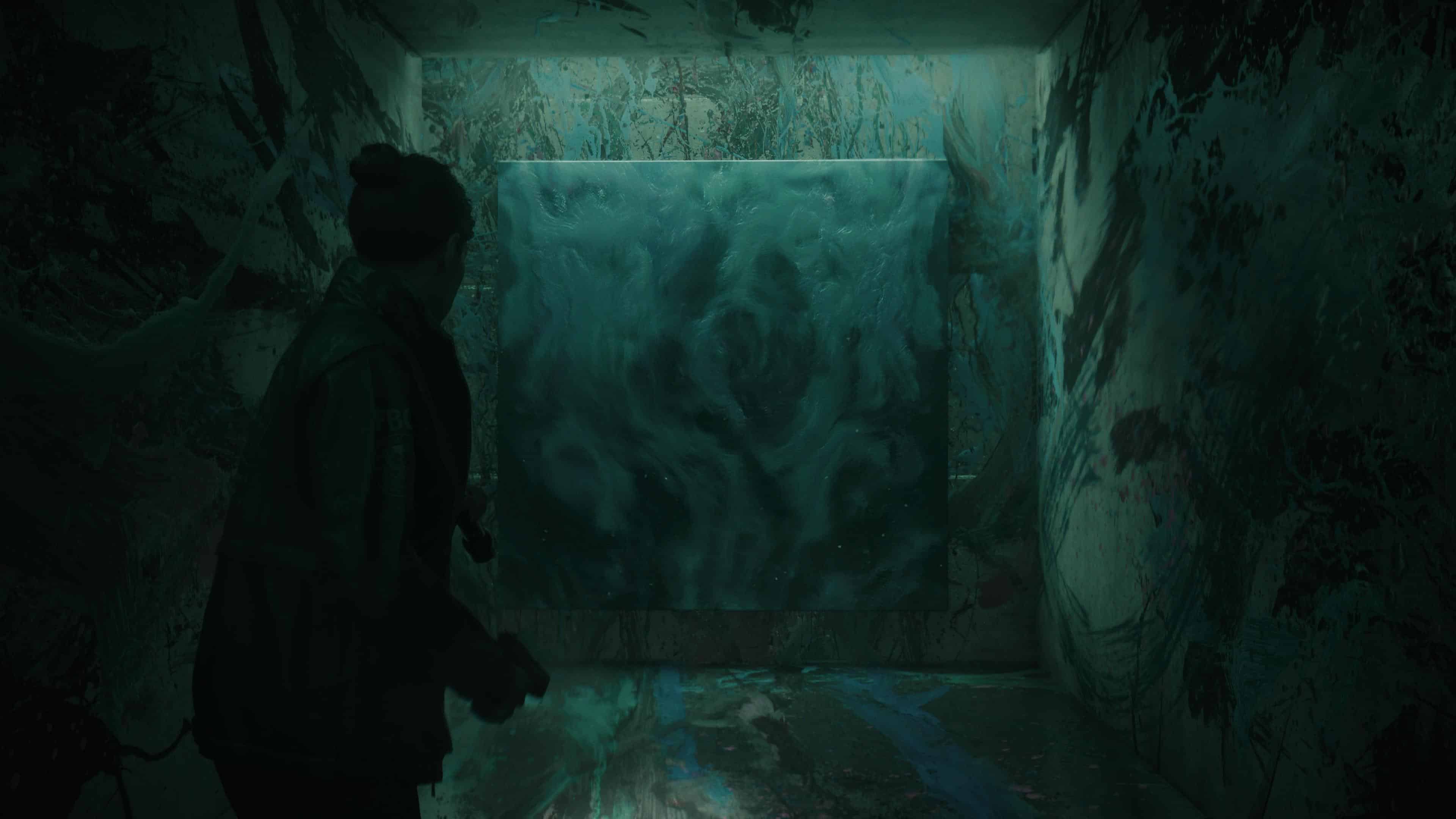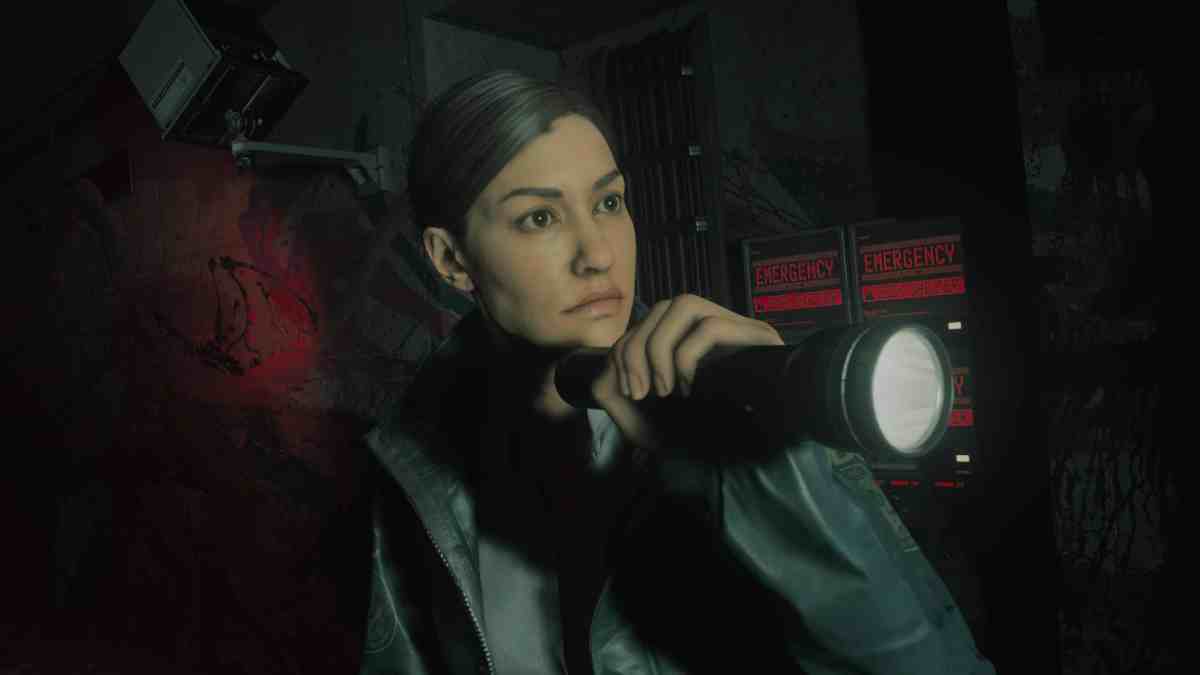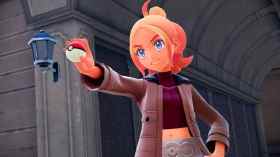The Lake House has been a compelling presence in Alan Wake 2 since the game launched in 2023. Spoken about only in whispers, and glimpsed from behind a locked fence, the assumed paranatural building frightened with its silence and intrigue. With the arrival of The Lake House DLC, its mysteries are finally unravelled – but the further you travel into this location, the more you’ll wish its doors stayed closed.
The Lake House stars Kiran Estevez, a Federal Bureau of Control agent who is called to the Lake House as warning signals indicate a breach in the “Threshold” of Bright Falls. The darkness of Cauldron Lake is spreading, and the FBC agents within The Lake House are in dire need of backup.
What Estevez finds is a station that has allowed greed and power to corrupt, through the exploitation of art and creativity. With surprisingly prescient timing, The Lake House arrives as an overt criticism of modern business, and the rise of generative AI tools.
The core mystery is this: a “parautalitarian” with the power to predict the future in artworks has been captured and held by the FBC, with the aim to wield his powers to the benefit of the organisation, and the wider world. To that end, he’s forced to experiment with his works, creating more and more paintings as the FBC attempts to uncover exactly how his power works – and most importantly, how they can replicate it.
Read: Alan Wake 2: Night Springs is bizarre and brilliant in every way
But as Remedy Entertainment makes clear, individual art and creativity can not be replicated by machine. These false artworks lack the soul, creativity, and passion that is imbued by human hands. Machines may attempt to replicate creativity, and get some of the way there, but it is a corruption of art.
In The Lake House, this corruption is literal – as the soul of the artist becomes trapped in his paintings, and his agonies become near-invulnerable beasts with long, spindly limbs, and no faces.

This is the result of insincere, mechanical creativity: pure nightmare fuel.
What adds to this chapter’s sheen of horror is that, for most of your adventure, you can’t attack these “Painted” in any meaningful way. Guns do nothing. Flares do nothing. You can only run, as you hear bone-chilling oozing, breathing, and crackling behind you.
The Lake House is a much darker, more serious adventure than its predecessor, Night Springs. Where Night Springs leant into the funny and bizarre, telling the stories of alternate worlds, this chapter instead dives into the nature of the FBC and its murky dealings. Where in Control, this organisation is presented with some righteousness, The Lake House seeks to underline exactly how deep the rabbit hole goes, and how dangerous the FBC’s exploration of the paranatural can become.
On each floor of the Lake House, you’ll learn more about the FBC’s mission, and how it went so wrong. On one particular floor, you’ll find the real horror at the heart of this location: a warehouse-like room filled with typewriters, all fed with Alan Wake’s writing, in the attempt to replicate it.
In scattered notes, you’ll find reams of writing from frustrated agents, trying to figure out exactly how Wake’s writing changes reality. They posit the brand of typewriter could have an influence. They want the exact papers, the exact circumstances. They believe that training a machine on Wake’s writing will be enough to replicate his powers – that the actual spirit of the writer has no meaning, but machine-created words along can reshape the world.
In the same way the FBC aims to predict the future by creating artwork after artwork, in the vein of its capture artist, it sincerely believes reality can be changed by dull and soulless replicas of Alan Wake’s words. In the era of CEOs and business management attempting to push generative AI on creative workers to improve productivity and efficiency, it’s unfortunately a very relatable circumstance.

And therein lies the true, effective horror of this chapter: it’s a spin on reality that only takes small steps into the fantastical. In the bridge between real life events and fictional, it makes you shudder at every turn. The nature of fiction and reality colliding is a core theme of Alan Wake 2, and it’s incredibly well-realised in this particular story.
Any creative will see a reflection of themselves in this chapter, and that’s the most powerful part of The Lake House. It forces you to engage with its dripping sense of dread, and to reflect on your own hobbies, your own careers – and to see exactly what exploitation and greed may create.
As its tale draws to a close, it does share one final note of hope: that creativity cannot be replicated in any meaningful way, without the human soul, and without passion. Exploitation of art is a corruption, and we must understand that completely.
In this, and in everything that’s come before, Alan Wake 2 is an ode to creativity and inspiration, and every grand idea humans can bring to life with their very own hands. Art is beautiful and precious, and we should protect it.
At the end of the road, Alan Wake 2 stands as testimony to that fact. We should all be thankful that a game as ambitious and fiercely creative as this exists, in a world where making true art is more difficult than ever.





